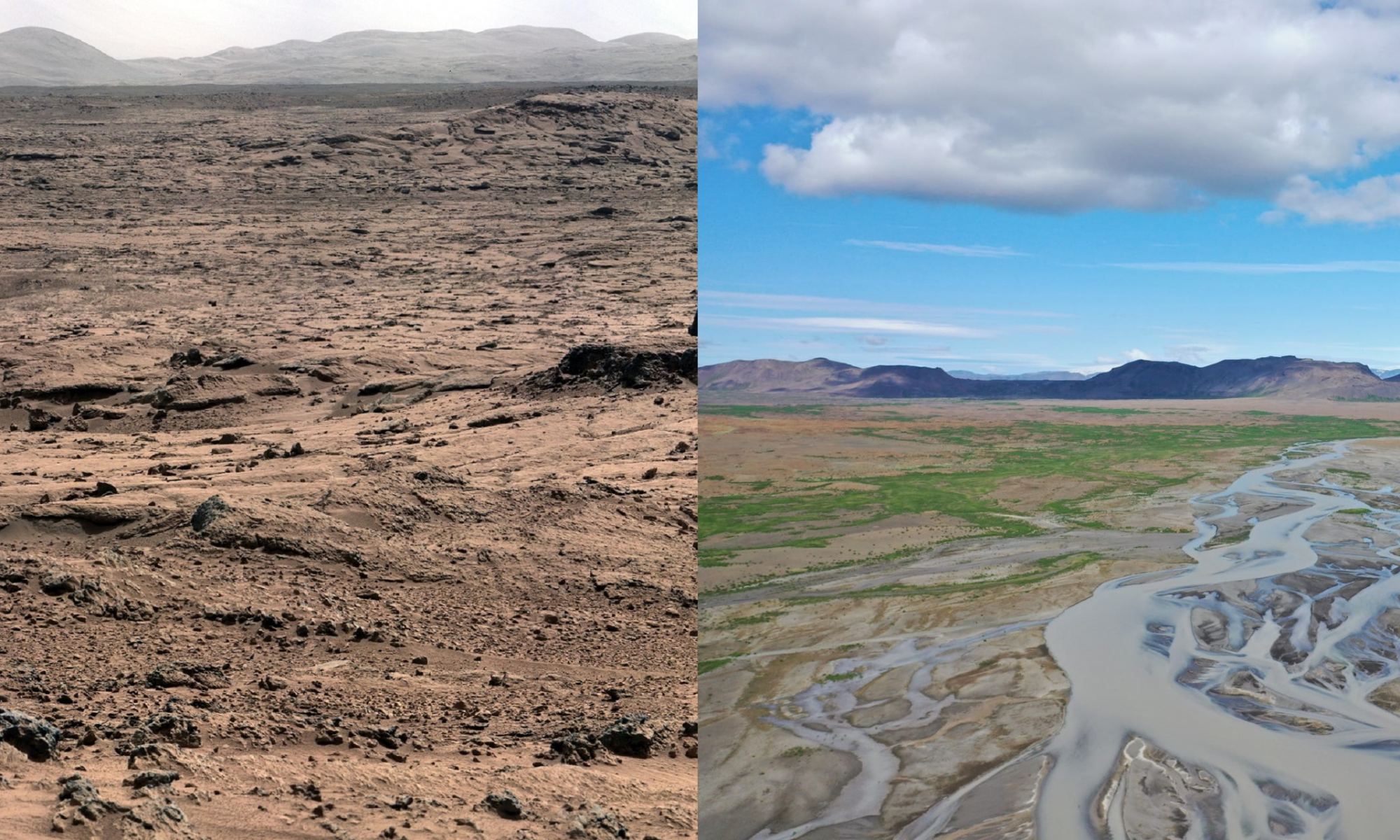The search for life—even ancient life—on Mars is trickier than we thought. In a recent study published in the journal Astrobiology, researchers have determined that NASA’s Mars Perseverance (Percy) Rover will have to dig two meters (6.6 feet) beneath the Martian surface in order to find traces of ancient life. This is because the surface of Mars is constantly bombarded with extreme levels of solar radiation that scientists hypothesize would quickly degrade small molecules such as amino acids. The reason for this extreme level of radiation is due to the absence of a magnetic field, which scientists believe was stripped away billions of years ago when the planet’s liquid outer core ceased to produce the dynamo that created the field.
Continue reading “Mars Rovers Will Need to Dig Deeper If They Want to Find Evidence of Life”Iceland is a Similar Environment to Ancient Mars
Mars is often referred to as “Earth’s Twin” because of the similarities the two planets have. In fact, Mars is ranked as the second most-habitable planet in the Solar System behind Earth. And yet, ongoing studies have revealed that at one time, our two planets had even more in common. In fact, a recent study showed that at one time, the Gale Crater experienced conditions similar to what Iceland experiences today.
Since 2012, the Curiosity rover has been exploring the Gale Crater in search of clues as to what conditions were like there roughly 3 billion years ago (when Mars was warmer and wetter). After comparing evidence gathered by Curiosity to locations on Earth, a team from Rice University concluded that Iceland’s basaltic terrain and cool temperatures are the closest analog terrain to ancient Mars there is.
Continue reading “Iceland is a Similar Environment to Ancient Mars”Mars Might Have Lost its Water Quickly

Mars is an arid place, and aside from a tiny amount of water vapour in the atmosphere, all water exists as ice. But it wasn’t always this arid. Evidence of the planet’s past wet chapter dots the surface. Paleolakes like Jezero Crater, soon to be explored by NASA’s Perseverance Rover, provide stark evidence of Mars’ ancient past. But what happened to all that water?
It disappeared into space, of course. But when? And how quickly?
Continue reading “Mars Might Have Lost its Water Quickly”This is What Perseverance’s Landing Site Looked Like Billions of Years Ago. See Why it’s Such a Compelling Target?
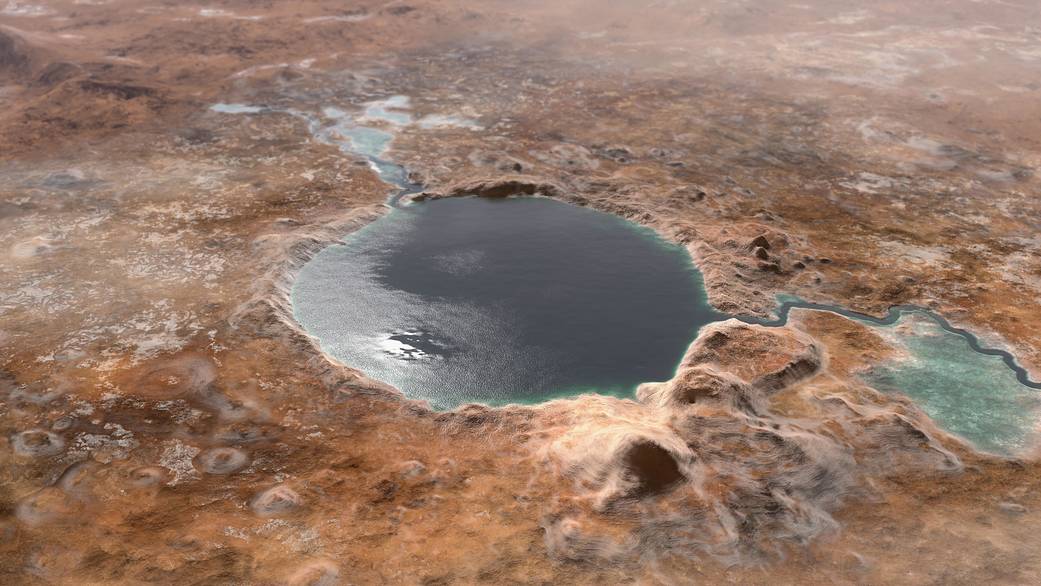
Today is a milestone in NASA’s Perseverance mission to Mars. At 1:40 pm Pacific time today, the rover will have traveled 235.4 million km (146.3 million miles). That means the spacecraft is halfway to Mars and its rendezvous with Jezero Crater. The spacecraft isn’t traveling in a straight line, and the planets are moving, so it’s not equidistant to both planets.
“Although we’re halfway into the distance we need to travel to Mars, the rover is not halfway between the two worlds,” Kangas explained. “In straight-line distance, Earth is 26.6 million miles [42.7 million kilometers] behind Perseverance and Mars is 17.9 million miles [28.8 million kilometers] in front.”
But today’s still a good time to take another look at Jezero Crater, and why NASA chose it as the mission’s target.
Continue reading “This is What Perseverance’s Landing Site Looked Like Billions of Years Ago. See Why it’s Such a Compelling Target?”Pictures from Curiosity Show the Bottom of an Ancient Lake on Mars, the Perfect Place to Search for Evidence of Past Life
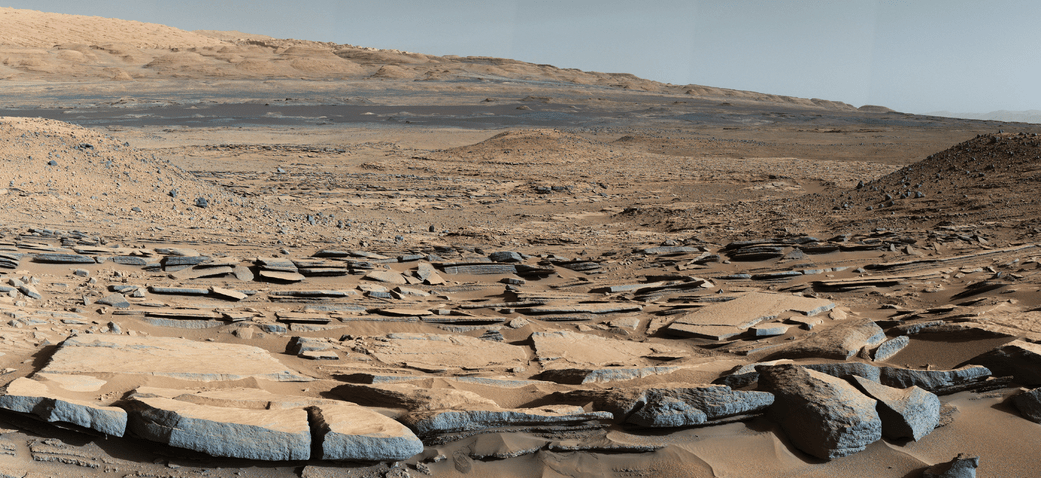
It’s all about the detail.
In a way, Mars looks like a dusty, dead, dry, boring planet. But science says otherwise. Science says that Mars used to be wet and warm, with an atmosphere. And science says that it was wet and warm for billions of years, easily long enough for life to appear and develop.
But we still don’t know for sure if any life did happen there.
Continue reading “Pictures from Curiosity Show the Bottom of an Ancient Lake on Mars, the Perfect Place to Search for Evidence of Past Life”Curiosity’s Martian Chronicles Rife With Intriguing Inconsistencies
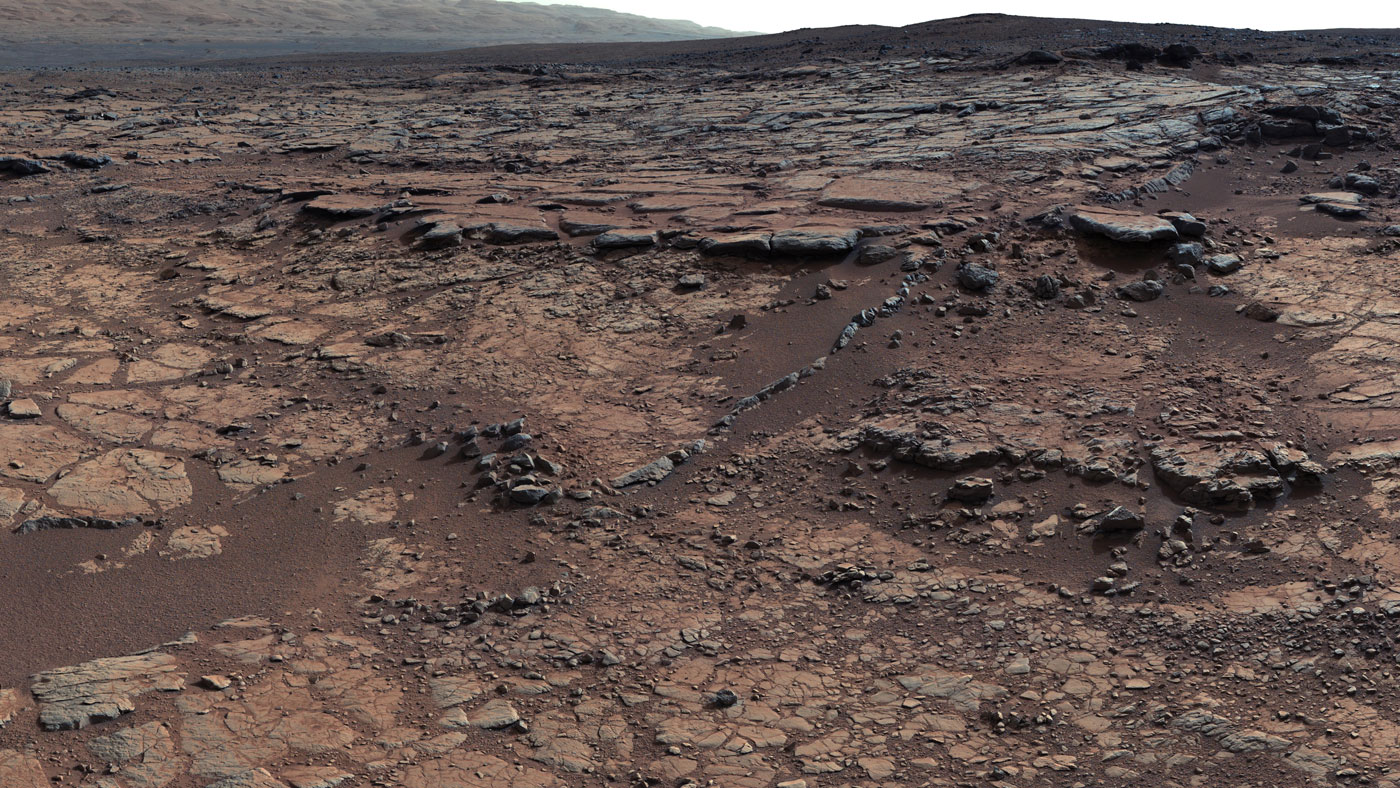
The study of Mars’ surface and atmosphere has unlocked some ancient secrets. Thanks to the efforts of the Curiosity rover and other missions, scientists are now aware of the fact that water once flowed on Mars and that the planet had a denser atmosphere. They have also been able to deduce what mechanics led to this atmosphere being depleted, which turned it into the cold, desiccated environment we see there today.
At the same time though, it has led to a rather intriguing paradox. Essentially, Mars is believed to have had warm, flowing water on its surface at a time when the Sun was one-third as warm as it is today. This would require that the Martian atmosphere had ample carbon dioxide in order to keep its surface warm enough. But based on the Curiosity rover’s latest findings, this doesn’t appear to be the case.
These findings were part of an analysis of data taken by the Curiosity’s Chemistry and Mineralogy X-ray Diffraction (CheMin) instrument, which has been used to study the mineral content of drill samples in the Gale Crater. The results of this analysis were recently published in Proceedings of the National Academy of Science, where the research team indicated that no traces of carbonates were found in any samples taken from the ancient lake bed.
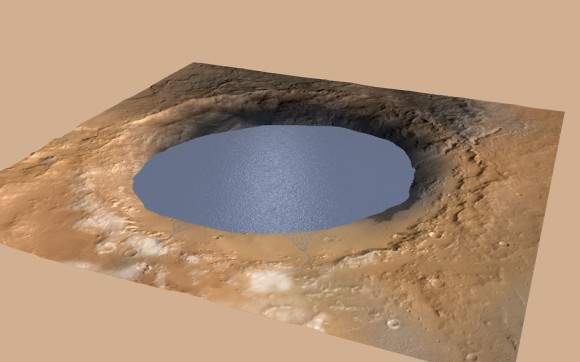
To break it down, evidence collected by Curiosity (and a slew of other rovers, landers and orbiters) has led scientists to conclude that roughly 3.5 billion years ago, Mars surface had lakes and flowing rivers. They have also determined, thanks to the many samples taken by Curiosity since it landed in the Gale Crater in 2011, that this geological feature was once a lake bed that gradually became filled with sedimentary deposits.
However, for Mars to have been warm enough for liquid water to exist, its atmosphere would have had to contain a certain amount of carbon dioxide – providing a sufficient Greenhouse Effect to compensate for the Sun’s diminished warmth. Since rock samples in the Gale Crater act as a geological record for what conditions were like billions of years ago, they would surely contain plenty of carbonate minerals if this were the case.
Carbonates are minerals that result from carbon dioxide combining with positively charged ions (like magnesium and iron) in water. Since these ions have been found to be in good supply in samples of Martian rock, and subsequent analysis has shown that conditions never became acidic to the point that the carbonates would have dissolved, there is no apparent reason why they wouldn’t be showing up.
Along with his team, Thomas Bristow – the principal investigator for the CheMin instrument on Curiosity – calculated what the minimum amount of atmospheric carbon dioxide would need to be, and how this would have been indicated by the levels of carbonate found in Martian rocks today. They then sorted through the years worth of the CheMin instrument’s data to see if there were any indications of these minerals.
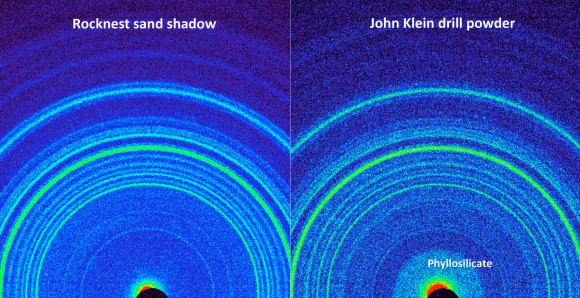
But as he explained in a recent NASA press release, the findings simply didn’t measure up:
“We’ve been particularly struck with the absence of carbonate minerals in sedimentary rock the rover has examined. It would be really hard to get liquid water even if there were a hundred times more carbon dioxide in the atmosphere than what the mineral evidence in the rock tells us.”
In the end, Bristow and his team could not find even trace amounts of carbonates in the rock samples they analyzed. Even if just a few tens of millibars of carbon dioxide had been present in the atmosphere when a lake existed in the Gale Crater, it would have produced enough carbonates for Curiosity’s CheMin to detect. This latest find adds to a paradox that has been plaguing Mars researchers for years.
Basically, researchers have noted that there is a serious discrepancy between what surface features indicate about Mars’ past, and what chemical and geological evidence has to say. Not only is there plenty of evidence that the planet had a denser atmosphere in the past, more than four decades of orbital imaging (and years worth of surface data) have yielded ample geomorphological evidence that Mars once had surface water and an active hydrological cycle.
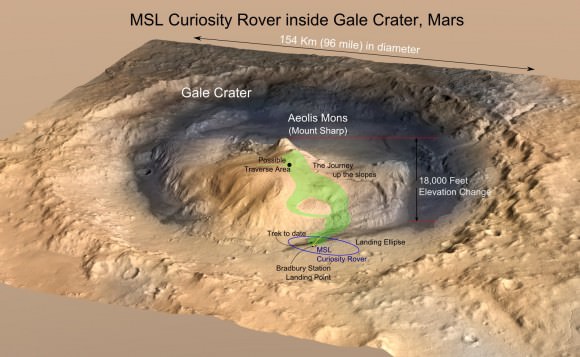
However, scientists are still struggling to produce models that show how the Martian climate could have maintained the types of conditions necessary for this to have been the case. The only successful model so far has been one in which the atmosphere contained a significant amount of CO2 and hydrogen. Unfortunately, an explanation for how this atmosphere could be created and sustained remains elusive.
In addition, the geological and chemical evidence for such a atmosphere existing billions of years ago has also been in short supply. In the past, surveys by orbiters were unable to find evidence of carbonate minerals on the surface of Mars. It was hoped that surface missions, like Curiosity, would be able to resolve this by taking soil and drill samples where water had been known to exist.
But as Bristow explained, his team’s study has effectively closed the door on this:
“It’s been a mystery why there hasn’t been much carbonate seen from orbit. You could get out of the quandary by saying the carbonates may still be there, but we just can’t see them from orbit because they’re covered by dust, or buried, or we’re not looking in the right place. The Curiosity results bring the paradox to a focus. This is the first time we’ve checked for carbonates on the ground in a rock we know formed from sediments deposited under water.”

There are several possible explanations for this paradox. On the one hand, some scientists have argued that the Gale Crater Lake may not have been an open body of water and was perhaps covered in ice, which was just thin enough to still allow for sediments to get in. The problem with this explanation is that if this were true, there would be discernible indications left behind – which would include deep cracks in the soft sedimentary lakebed rock.
But since these indications have not been found, scientists are left with two lines of evidence that do not match up. As Ashwin Vasavada, Curiosity’s Project Scientist, put it:
“Curiosity’s traverse through streambeds, deltas, and hundreds of vertical feet of mud deposited in ancient lakes calls out for a vigorous hydrological system supplying the water and sediment to create the rocks we’re finding. Carbon dioxide, mixed with other gases like hydrogen, has been the leading candidate for the warming influence needed for such a system. This surprising result would seem to take it out of the running.”
Luckily, incongruities in science are what allow for new and better theories to be developed. And as the exploration of the Martian surface continues – which will benefit from the arrival of the ExoMars and the Mars 2020 missions in the coming years – we can expect additional evidence to emerge. Hopefully, it will help point the way towards a resolution for this paradox, and not complicate our theories even more!
Further Reading: NASA
NASA’s MAVEN Orbiter 3 Weeks and 4 Million Miles from Mars

Now just 3 weeks and 4 million miles (6 million kilometers) from rendezvous with Mars, NASA’s ground breaking Mars Atmosphere and Volatile Evolution (MAVEN) orbiter is tracking precisely on course for the crucial Mars Orbital Insertion (MOI) engine firing slated for September 21, 2014.
MAVEN will investigate Mars transition from its ancient, water-covered past, to the cold, dry, dusty world that it has become today.
It’s been a picture perfect flight thus far during the ten month interplanetary voyage from Earth to Mars. To date it has traveled 93% of the path to the Red Planet.
As of August 29th, MAVEN was 198 million kilometers (123 million miles) from Earth and 6.6 million kilometers (4.1 million miles) from Mars. Its velocity is 22.22 kilometers per second (49,705 miles per hour) as it moves on a heliocentric arc around the Sun.
“MAVEN continues on a smooth journey to Mars. All spacecraft systems are operating nominally,” reported David Mitchell, MAVEN Project Manager at NASA’s Goddard Space Flight Center, in an update.
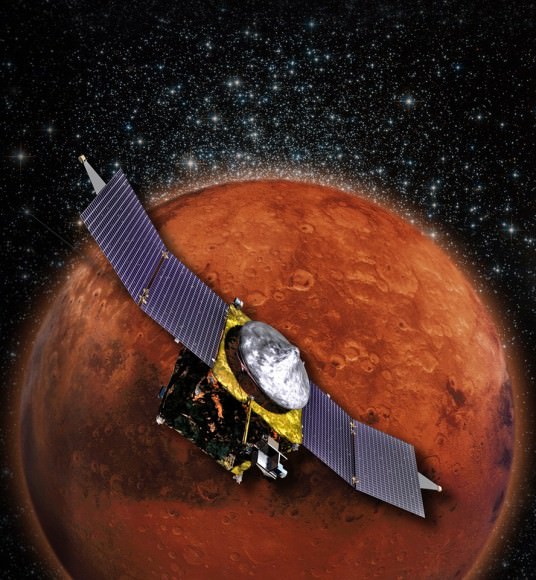
In fact, MAVEN’s navigation from Earth to Mars has been so perfect that the team will likely cancel the final Trajectory Correction Maneuver (TCM) that had been planned for September 12.
The team will make a final decision on whether TCM-4 is necessary on Sept. 4.
Previously the team also cancelled TCM-3 that had been planned for July 23 because it was “not warranted.”
“We are tracking right where we want to be,” says Mitchell.
TCM-1 and TCM-2 took place as scheduled in December 2013 and February 2014, Bruce Jakosky, MAVEN’s Principal Investigator told Universe Today.
These thruster firings ensure the craft is aimed on the correct course through interplanetary space.
See MAVEN’s trajectory route map below.
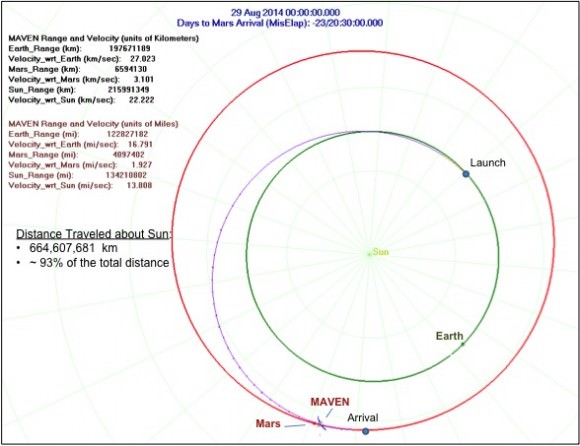
“Since we are now in a ‘pre-Mars Orbit Insertion (MOI) moratorium’, all instruments are powered off until after we arrive at the Red Planet,” according to Mitchell.
Although MAVEN’s instrument are resting, the team has no time to rest.
They must ensure that all is in readiness for the MOI burn and held a review at the Jet Propulsion Laboratory with the Deep Space Network (DSN) team and confirmed its readiness to support the engine firing on MOI night.
The entire team also conducted a readiness rehearsal, comprising Lockheed Martin operations center in Denver, Colorado, the backup operations center at Goddard Space Flight Center in Greenbelt, Maryland, and the Jet Propulsion Laboratory in Pasadena, California.
“The review was successful; DSN is ready to support us on MOI night,” says Mitchell.
The do or die MOI maneuver is scheduled for approximately 10 p.m. EDT on Sept. 21, 2014 when MAVEN will rendezvous with the Red Planet following a ten month interplanetary voyage from Earth.
The $671 Million MAVEN spacecraft’s goal is to study Mars upper atmosphere to explore how the Red Planet lost most of its atmosphere and water over billions of years.
The MAVEN probe carries nine sensors in three instrument suites to study why and exactly when did Mars undergo the radical climatic transformation.
“I’m really looking forward to getting to Mars and starting our science!” Bruce Jakosky, MAVEN’s Principal Investigator from the University of Colorado at Boulder, told me.
MAVEN aims to discover the history of water and habitability stretching back over billions of years on Mars.
It will measure current rates of atmospheric loss to determine how and when Mars lost its atmosphere and water.
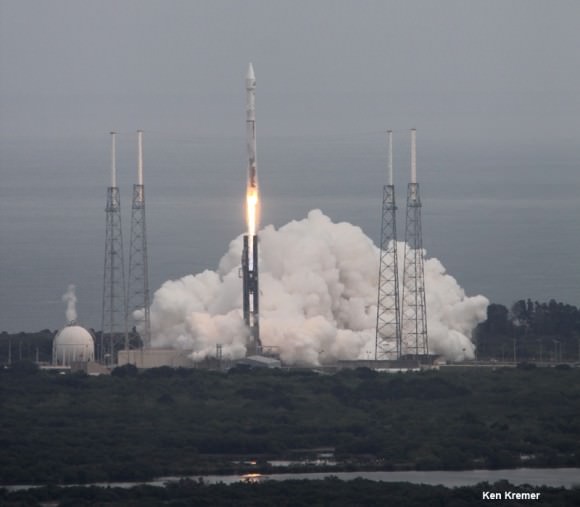
MAVEN thundered to space over nine months ago on Nov. 18, 2013 following a flawless blastoff from Cape Canaveral Air Force Station’s Space Launch Complex 41 atop a powerful Atlas V rocket and thus began a 10 month interplanetary voyage from Earth to the Red Planet.
MAVEN is streaking to Mars along with ISRO’s MOM orbiter, which arrives a few days later on September 24, 2014.
MOM and MAVEN will join Earth’s fleet of 3 current orbiters from NASA and ESA as well as NASA’s pair of sister surface rovers Curiosity and Opportunity.
Meanwhile last week, NASA announced it was proceeding with development of the mammoth SLS heavy lift rocket that will one day launch astronauts to Mars in the Orion capsule.
Stay tuned here for Ken’s continuing MAVEN, MOM, Rosetta, Opportunity, Curiosity, Mars rover and more Earth and planetary science and human spaceflight news.



